 Maserati was founded in Bologna, Italy, on December 1, 1914 and officially started operation on December 14, 1914. The nucleus of the company was then represented by Alfieri Maserati (1887-1932) and two of his brothers, Ettore and Ernesto. They all had an interest in mechanics and a love for speed. Though predominantly engaged in technical and commercial matters of their new enterprise, they all, at one point, sat behind the steering wheel of their racing cars in the golden days of motor racing. A fourth brother, Bindo, joined the company when Alfieri died in 1932 and a fifth brother, Mario, is credited with designing the famed Maserati logo, taking inspiration from the Neptune fountain in the historic centre of Bologna.
Maserati was founded in Bologna, Italy, on December 1, 1914 and officially started operation on December 14, 1914. The nucleus of the company was then represented by Alfieri Maserati (1887-1932) and two of his brothers, Ettore and Ernesto. They all had an interest in mechanics and a love for speed. Though predominantly engaged in technical and commercial matters of their new enterprise, they all, at one point, sat behind the steering wheel of their racing cars in the golden days of motor racing. A fourth brother, Bindo, joined the company when Alfieri died in 1932 and a fifth brother, Mario, is credited with designing the famed Maserati logo, taking inspiration from the Neptune fountain in the historic centre of Bologna.
The Maserati Story is the story of a family with daring, courageous, forward-looking ideas. It all started with Rodolfo Maserati, father of seven sons. A railway engineer employed by the Italian monarchy, he was the father of a brood which was to write automotive history. The Maserati brothers were born in 1881, year of arrival of the first-born, Carlo, and 1898, when Ernesto was born. This formed a family with a single passion, for engine design and racing cars.
Before his death Carlo Maserati introduced his brother Alfieri, who was only sixteen years old, to Isotta Fraschini. Alfieri immediately impressed Cesare Isotta, who employed him as a mechanic before appointing him as a racing driver. In 1913 Alfieri opened his own first garage in Bologna, providing service for Isotta Fraschini cars. In 1914 he brought some of his brothers into the firm and founded Società Anonima Officine Alfieri Maserati. A few months later the First World War broke out: Alfieri and his brother Ettore were enlisted, while Ernesto, just 17 years of age, worked in the garage during the day and pursued his technical studies in the evening.
A very precocious, creative engineer, Carlo was the eldest of the Maserati brothers. He built his first single-cylinder engine at just 17 years of age. He immediately caught Fiat’s eye and was hired as a test driver; in the meantime, while in Turin, he built his own first car in his free time. With a wooden chassis and single-cylinder engine, this could be described as the first Maserati in history. In the years which followed, Carlo Maserati also worked for Isotta Fraschini and Bianchi, where he became a racing driver, although he never lost his passion for design engineering. In 1908 he became CEO of the Milan-based firm Junior, before founding his very own firm in 1909, with the dream of producing an outstanding aircraft engine. Carlo Maserati tragically died the following year, stricken by a terrible lung disease.
At the end of the War, the Maserati Brothers moved their garage to more suitable, larger premises in the Pontevecchio area of Bologna. Here Alfieri, Ernesto and Ettore worked on the development of the first Maserati in history. Mario Maserati, the artistic brother with little interest in cars or racing, was tasked with designing the fledgling company’s logo. On the advice of Marquis Diego de Sterlich, a great friend of the family, Mario chose to use one of the symbols of the city of Bologna: the Trident of the statue of Neptune on the fountain in Piazza Maggiore. The colours chosen for the Maserati logo were also those of Bologna itself: blue and red.
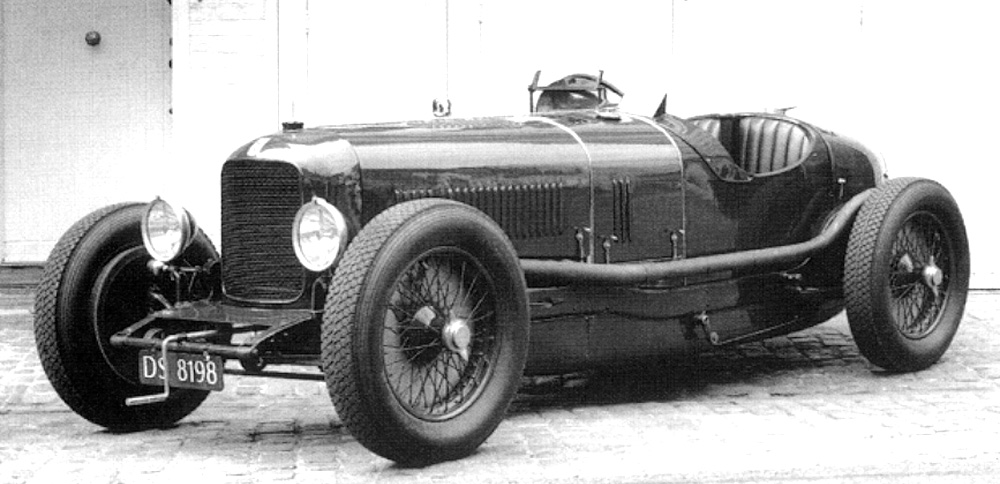
It was in 1920 that Alfieri Maserati returned to the racing circuits, first driving a SCAT and then a Nesseldorf, but he was dissatisfied with these cars’ performances and so in 1921 he decided to create his own first racing car. Alfieri took an Isotta Fraschini chassis and mounted the Hispano Suiza engine on it. The project’s complexity becomes clearer when we learn that he used a SCAT transmission and other technical components taken from various cars of the time. The car Alfieri created made its debut on 24 July 1921 on the Mugello Circuit, and achieved an impressive second place in its class: its first victory came just two months later. In fact, in September 1921 Alfieri and Ernesto Maserati won the Susa-Moncenisio race, the first in a series of wins, leading the press to start asking questions about this man called Maserati, in a car he built himself, who was winning races ahead of more famous marques.
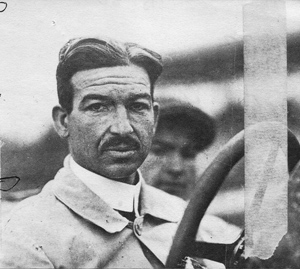
In 1922 Alfieri Maserati started to work for Diatto, also competing for the Turin racing team. In 1925 Diatto withdrew from racing for financial reasons. So, with the indispensable financial backing of Marquis Diego de Sterlich, the Maserati Brothers decided to buy ten Diatto 30 Sport chassis, opening the way to the production of the first cars to bear the Trident logo. Then, in 1926, came the Maserati Tipo 26, a development of the Diatto GP 8C, rewarding all Alfieri’s design efforts and making his dream come true.
Alfieri won several victories in the early thirties; Maserati’s first international win was at the Tripoli Grand Prix in 1930, and successes continued to arrive as the firm gradually produced a sequence of racing cars. Alfieri Maserati received the honorific title of Cavaliere del Lavoro from the Italian Government, but he died in 1932 during surgery on the only kidney left to him after a terrible accident in 1927. Even in mourning, the Maserati brothers did not give up: Bindo left Isotta Fraschini to join the family firm, becoming Chairman of Maserati and thus carrying forward the history of the Trident Marque.
Even though customers continue to line up outside the workshop in order to buy the 8CM, Maserati is under sustained pressure from the new German entries, Mercedes and Auto Union, strongly supported by the government of the Third Reich. Ernesto, Ettore and Bindo understand that the country needs a decisive change of direction: for this reason they welcome the collaboration of famous Italian entrepreneur Adolfo Orsi. His empire stretches from foundries to the steel industry, from metallurgy to machine tools, from farm equipment to services. Like the Maserati brothers, he’s a self made man. In 1937, Ernesto, Ettore and Bindo sell the entire company to him. However, they continue to cover various management roles in the two separate companies Orsi buys: Officine Alfieri Maserati, for the production of race cars, and Fabbrica Candele Maserati, for the production of spark plugs. The headquarters of both companies remain in Bologna. Orsi is an intelligent businessman, he successfully gets the finances of the companies in order but doesn’t interfere in the technical side of things, in which he has no expertise. Finally, free from other external distractions, the Maserati brothers can get back to doing what they do best in the world of racing.
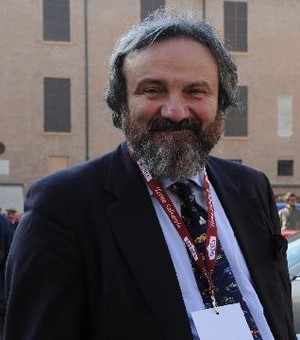
Adolfo Orsi (1888–1972) was an Italian industrialist, known for owning the Maserati automobile maker. Coming from a poor family from San Lazzaro, near Modena, he lost his father in 1899. Later he created a successful business in the scrap iron, steel mill and farm equipment manufacturing area, employing several thousands in Modena and surrounding towns, as of the late 1920s. His interests also included running the trolley company of Modena.
With his brother, Marcello, he was involved in a Fiat dealership, the Fiat A.M. Orsi in 1935. He bought the financially troubled Maserati company in 1937, employing his son, Omar Orsi as managing director; three of the Maserati Brothers were retained on ten-year contracts on the engineering team (1937–1947). Orsi moved operations from Bologna to Modena in 1940, near his steel plants (the Fonderie Riunite), for automobile as well as spark plug manufacturing. Orsi hired his brother in-law Alceste Giacomazzi, as new general director, and succeeded in bringing Ferrari employee Alberto Massimino over to Maserati (1944–1952), as well as hiring the Argentine driver ace Juan Manuel Fangio (1953).
Orsi faced trouble, evident as Maserati was temporarily closed for restructuring (1949), and also from steel mill workers’ strike action against Orsi, who refused to hire communists, leaving numerous dead (9 June 1950). The foundries were reopened, but sold off (1952), and the family empire split among the siblings (1953). Adolfo kept the Maserati car manufacturing business, his brother Marcello was already involved in the foundries, and sister Ida Orsi took charge of the motorbike manufacturing (the Società Anonima Fabbrica Candele Accumulatori Maserati, 1953–1960).
Orsi accepted a deal with Argentina, as president and motor racing supporter Juan Perón, placed one large order with Orsi for machine tooling (1954). Due to Revolución Libertadora and the exile of Perón, receiving payments for the order was problematic, as they were for a similar deal with the Spanish government. The financial problems resulted in Maserati being placed under controlled management. The remnants of Maserati was handled by the creditor, Credito Italiano. Orsi remained in active management of Maserati until 1968, when Orsi decided to sell the balance of his interest in Maserati to Citroen who had earlier purchased a major holding in Maserati in anticipation of a motor contract for the Citroen SM. Adolfo Orsi died on December 20th 1972 at the age of 84 years old.
The first product of the Orsi-Maserati era is unveiled in March 1938. It’s the 8CTF: 8 Cylinder Fixed Head. The competition from the German cars continues to torment them, but there is no shortage of victories. In 1939, Maserati wins for the first time in America: Wilbur Shaw, driving his 8CTF, renamed the “Boyle Special”, wins in Indianapolis. Maserati is the first Italian manufacturer to win the prestigious title. And they manage to repeat the trick the following year.
By the outbreak of the Second World War Maserati has left Bologna for Modena. Orsi had wanted to concentrate all of his businesses in one geographical area which he owned. The Maserati factory opens in viale Ciro Menotti, an address destined to become synonymous with the world of automobiles. However, because of the war they have to forget about producing race cars for a while and concentrate on producing spark plugs and other items critical to the war effort. In this period, Maserati Spark Plugs and Batteries continues to supply Maserati Auto with the batteries it needed for its electric vehicles produced between 1940 and 1945.

At the beginning of March 1946 , the prototype of what can be considered the first GranTurismo – i.e. the first Maserati destined for daily use and not for racing – is unveiled at the Geneva Car Show. Simply christened “A6” – A in honour of Alfieri and 6 denoting the number of cylinders – the project was begun by Ernesto Maserati before the brothers decided to leave the company forever. The design and originality are immediately appreciated by the public: production begins in earnest. In 1948, at the Turin Motor Show, Maserati exhibits the first A6 1500 model, the incredible styling of which was the work of renowned designer Pininfarina.
The Maserati victory at the Gran Premio of Nizza in 1946 carries a huge symbolic value: the Second World War is finally over. The civilian world is working again. Instead, after this huge success, Ernesto, Ettore and Bindo Maserati decide to leave the company and return to Bologna. There were never any particular problems with Orsi, but perhaps the brothers preferred to get away from the big industrial mentality of the group and furthermore, were tired of the continuing discussions with the unions. They opened a new company, Osca, where they dedicated themselves exclusively to the design, development and construction of race cars.
1950 marks the birth of what would four years later become Formula 1. Maserati is there from the beginning, starting from the very first race, but their cars (which in reality, considering the rules of this first phase, were still F2 class cars) were not too successful initially. The tension within the company at the end of the 40’s wasn’t conducive to the development of race cars. In 1952 a new F1 rule favours cars with a maximum engine size of two litres if aspirated, or one and a half litres if supercharged. The new formula opens the playing field to Alberto Ascari and to Ferrari, but even Maserati prepares to re-enter the tough competition in full force. In fact, the era of Juan Manuel Fangio now begins.
In 1953 Adolfo Orsi divides the management of his companies between various family members: for himself and his son Omar he keeps the Officine Alfieri Maserati, which includes the production of cars and machine tools. According to his plan, car production would increase the prestige of his company thus helping to sell his machine tools.
In 1954, the World Championship rules change again: in reality, it could be said that this is the moment that the real Formula 1 is born. Maserati returns as a protagonist with the 250F, which debuts with an immediate victory. Juan Manuel Fangio wins the Argentinean and Spa Grands Prix. Later the Argentine pilot, already driving for Mercedes, returns to the House of Stuttgart and then to Ferrari, but the crowning moment of his career is still to arrive. And it will be aboard a Maserati.
In 1956 Formula 1 becomes a family duel between the rivals from Modena: Ferrari and Maserati. Modena is a city divided, half rooting for one team and half rooting for the other. On Sundays the cars square off on the track. On Monday mornings, the winning fans enjoy bragging rights over the losers in the bars and under the colonnades in the city centre.
After the huge win in 1957, a series of financial difficulties forces Adolfo Orsi to close down certain parts of his industrial empire, including the sports division. It’s an enormous sacrifice, but signals the beginning of a turnaround. Concentrating exclusively on the automobile sector, Maserati transforms itself in a short time into one of the most prestigious car manufacturers in the world.
In 1957 the famous Juan Manuel Fangio leaves Ferrari and comes back to Maserati. He wins four of the eight GP’s needed to win the world title: Argentina, Monaco, France and most importantly, Germany. It’s here on the Nürburgring circuit, that on Sunday 4 August, the extraordinary Argentinean pilot records the biggest victory of his career to become world champion for the fifth and final time.
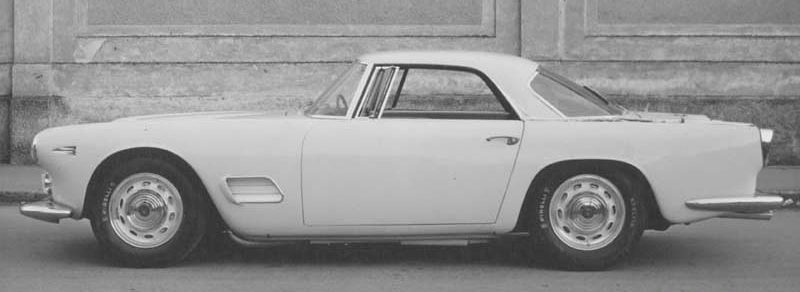
The “White Dame”, as the first prototype of the 3500 GT is called, is Maserati’s answer to the car market during the economic boom years. From 1961 Maserati also introduces the GTI, famous for being the first car with direct injection in Italy. The Shah of Persia is also impressed by the White Dame, but wants something even more exclusive. The famous engineer Giulio Alfieri takes up the challenge and finally realizes his long awaited dream: putting the 8 cylinder of the 450 S (the car in which Fangio had won the famous 12 Hours of Sebring) in a GranTurismo. The “Shah of Persia” is still considered to be one of the finest models by collectors and car historians. It has gold and precious wood finishes and is the most exclusive and luxurious car in the world at the time.
Even though Maserati has abandoned the race track, the desire for racing remains in its blood. Thus is born, from a project by engineer Giulio Alfieri, the legendary Tipo 60. Known by its nickname the Birdcage, it didn’t appear in official races under the Maserati name, but it was given to the most prestigious racing teams and won some important races like the two consecutive wins – in ’60 and ’61 – at the 1,000 kilometre Nürburgring, as well as other even more important victories in the USA.
Lightweight, extremely sporty and powerful, the Mistral is the first Maserati to be identified with the name of a famous wind. It is presented at the Turin Motor Show in 1963 but production of the coupé and spyder versions only begins at the beginning of 1964.
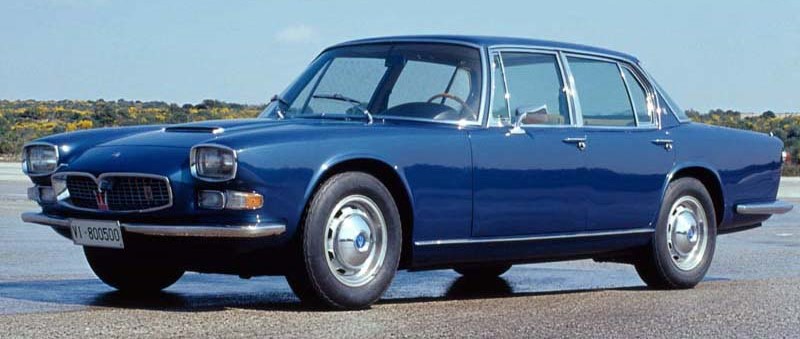
The idea of mounting a Maserati race engine in a sedan is suggested to ‘Commendatore’ Orsi by the journalist Gino Rancati. It’s a big change: until now Maserati had only built coupés and spyders. At the Turin Motor Show in 1963 Maserati shocks the auto world with the introduction of the Quattroporte, the fastest sedan in the world. The big flagship car of the Trident has all the characteristic traits of a Maserati – elegance, sportiness, power, and luxury – all of which in a four door model. The design project is a joint effort by engineers Alfieri and Pietro Frua, who designs the body.
In 1965, The Sebring is the evolution of the 3500 GT. It is named after the Florida autodrome where famous driver Juan Manuel Fangio won the 12 Hours in 1957. For those who so desired, automatic transmission was available together with spoked wheels and even air conditioning: accessories which were unheard of at the time.
From around the middle of the 60’s Maserati starts to become famous for its collaboration with well-known Italian designer Giorgetto Giugiaro, a relationship that would last for years to come. His first project, the 8 cylinder Ghibli, debuts at the Turin Auto Show in 1966 and is an immediate success. Maserati originally planned on producing on a hundred cars but production was immediately increased to 400. In the end, it was in production until the end of 1972 and a total of 1295 of these models were made, both in the spyder and coupé versions.
In 1970, The Orsi family decides to inject new blood into the company by taking on a new partner: Citroën. The company is organised by model and becomes more structured thanks to the influence of the French automaker, following its corporate example. During the 70’s, there are lots of other changes: the Orsi family finally leaves and Citroën sells out to Gepi, an Italian state owned company directed by the Argentinean-Italian entrepreneur Alejandro De Tomaso. Everything changes, but some things remain the same: the propelling and innovative force of Maserati, which never ceases to propose new models to the market.

In 1971 famous designer Giorgetto Giugiaro creates a new masterpiece: the Bora, another Maserati named, by no coincidence, after a famous wind. This extraordinary coupé brings back the disappearing front headlights of the Ghibli but has a much sportier feel, with the rear mounted engine in the centre. Also unforgettable is the Merak, described by Adolfo Orsi Jr. as the “little sister” of the Bora. At the Geneva Motor Show in 1972 Giugiaro presents a futuristic looking coupé called the Boomerang. Although never put into production it is still considered as one of his most celebrated concept cars.
In 1978 famous war hero Sandro Pertini, Head of the Italian State, chooses the Quattroporte Royale as his official car. It remained such until 1985. President Pertini always rode in this car, even during a visit to Maranello which became famous because Enzo Ferrari, in acknowledgment of the long rivalry between the two famous companies in Modena, refused to go and meet the presidential Maserati upon its arrival.
The Maserati Quattroporte continues to be synonymous with elegance and style, so much so that it appears in many films in the 80’s. Sylvester Stallone chooses it as boxer Rocky Balboa’s car in Rocky III (1982) while David Cronenberg uses it in two films, The Fly, in 1982, and The Dead Zone, 1983.
The Biturbo is the most symbolic car of the 80’s. The first sedans were launched on 14 December 1981, the birthday of Maserati, i.e. the date on which the Chamber of Commerce stamped the request filed 14 days earlier by the Maserati brothers in 1914. Beautiful and extremely high performance, the 6 cylinder 1,996 cc with two compressors can power up to 215 km/h. The Biturbo would end up being the most widely produced Maserati of all time. In its multiple versions and evolutions, from the Spyder to the Biturbo S, between 1982 and 1993 around 37,000 would be produced in total.
For Maserati the future begins in 1993 with its acquisition by the Fiat Group. Giovanni Agnelli, with incredible foresight, understands the enormous potential of this still small Italian icon of excellence. The company is headed up by Luca di Montezemolo, President and CEO of Ferrari. The final buyout of Maserati by Ferrari takes place in two stages with an initial stake purchased in 1997 and 100% of the company acquired in 1999. The partnership between the two most famous car manufacturers in Modena is destined to become even more famous than their old rivalry.
With the move to Ferrari the Maserati production line is initially halted. The objective is clear: completely close down the Modena factory, remodernise it and equip it with the most up-to-date production lines. The Maserati workers are temporarily moved to Maranello, but after only six months they return to their historic base in viale Ciro Menotti. Everything is ready, the future begins.
The first contribution of the Ferrari management is to drive the completion of an ongoing project: the 3200 GT, a coupé designed by Giorgetto Giugiaro that originally debuted at the Paris Motor Show of 1998. However, it was immediately decided that the coupé would be upgraded with an engine produced in Maranello. From this revolutionary idea, the Spyder was born, the car which marks the return of Maserati to the United States.
In 2001, after 12 year absence from the US market, Maserati returns to the United States. A car manufacturer who can pass the quality and safety tests in the USA is ready for any challenge, and it is no coincidence that this return is celebrated in great style during the gala evening at the Italian American Cancer Foundation. The room is full of famous personalities such as Lauren Bacall, Ivana Trump, Umberto Veronesi. The Maserati Spyder, the first real Maserati with an engine from Maranello, is the star of the charity auction. The electric blue body accentuates the form of the car, a creation by none other than Giorgetto Giugiaro. The winning bid of 130,000 USD is made by an Italian banker who lives and works in Milan and New York.
In 2003, after the release of the first GranTurismo model almost half a century ago, famous Italian designer Pininfarina returns to create a Maserati: the new Quattroporte, a car which has always held a special place in the history and annals of the House of the Trident. The arrival of the Quattroporte completes the Maserati range and significantly increases sales. But the Quattroporte also enjoys another huge success: after Sandro Pertini, another Italian president, Carlo Azeglio Ciampi, chooses it as his official state car. In honour of his illustrious predecessor, Ciampi chooses the color “Pertini Blue”.
In 2004 Maserati also returns to winning ways on the track. This is thanks to an extraordinary race car: the MC12. Designed by Giorgetto Giugiaro and Frank Stevenson, this supercar was developed for the track by Giorgio Ascanelli and has managed to accumulate an impressive haul of trophies. Maserati’s participation in the FIA GT from 2005 to 2010 is crowned with fourteen titles (and 19 victories): two Manufacturers Cups (2005 and 2007), five Driver Championships (Bartels-Bertolini in 2006, Thomas Biagi in 2007, and Bartels-Bertolini in 2008, 2009 and 2010); six Team Championships (uninterrupted since 2005, by the Vitaphone Racing Team); one Citation Cup in 2007 by gentleman driver Ben Aucott, JMB Racing, in addition to three absolute victories in the Spa 24 Hours (2005, 2006 and 2008).
In 2007, Following the Quattroporte, famous designer Pininfarina designs a new coupé which would have a profound impact on the history of Maserati. Incredibly beautiful, the GranTurismo wins at the Geneva Motor Show in 2007. The press fight amongst themselves to show it on their covers, the orders mount up day by day: it is a triumphant success story.

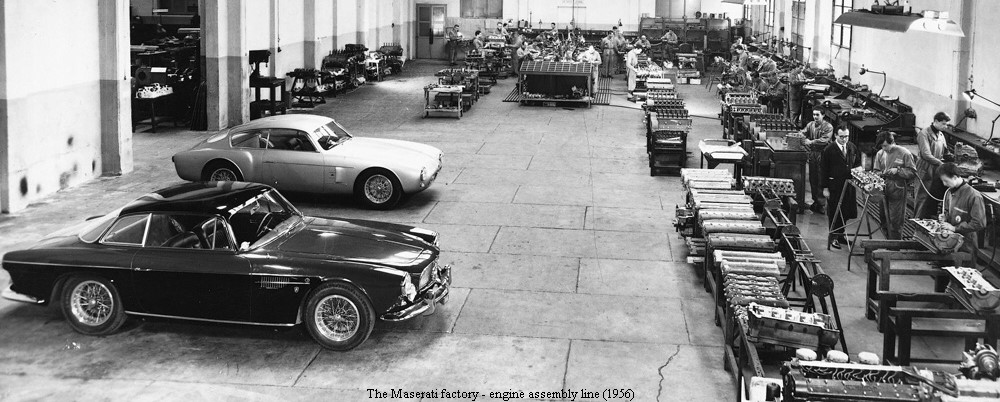

You must be logged in to post a comment.